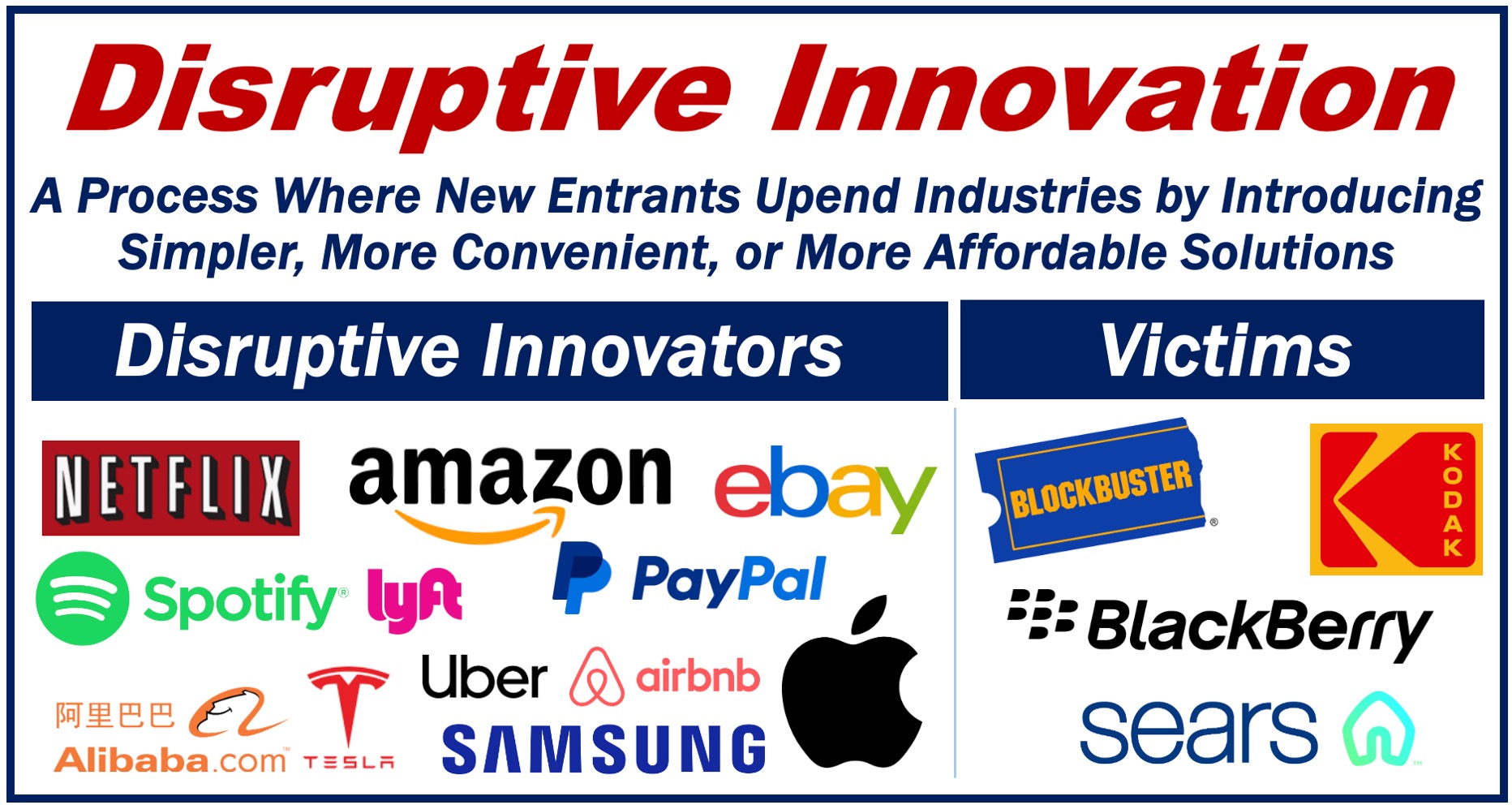Disruptive Innovation refers to new technology or a new business model that shakes up an existing market. It may knock the market leaders from their pedestals, trigger changes in consumer behavior or preferences, and often leads to the creation of entirely new markets or value networks.
This type of innovation typically introduces solutions that industry giants previously overlooked or deemed unprofitable. However, these alternatives resonate well with consumers.
The term may also refer to innovations that transform products or services, once exclusive to wealthy or highly skilled consumers, into options that are more affordable and accessible, broadening their appeal to a wider audience with varying economic or skill levels.
The term does not refer to new or breakthrough technologies that improve products that are already on the market. Rather, they make products more affordable and accessible.
Origin of the term
Clayton Christensen (1951-2020), an American academic and business consultant, first coined the term while researching the disk drive industry in the late 1990s. The concept gained wider popularity after he published an article in the Harvard Business Review in December 2015 titled ‘What is Disruptive Innovation?’ co-authored with Michael E. Raynor and Rory McDonald.
The Clayton Christensen Institute says the following about the term:
“Disruptive Innovation describes a process by which a product or service initially takes root in simple applications at the bottom of a market—typically by being less expensive and more accessible—and then relentlessly moves upmarket, eventually displacing established competitors.”
“Disruptive Innovations are NOT breakthrough technologies that make good products better; rather they are innovations that make products and services more accessible and affordable, thereby making them available to a larger population.”
How Disruptive Innovation Works
Disruptive innovations usually start small. They target a niche group of customers that established businesses may have overlooked. These initial customers may be looking for a more affordable or accessible solution than the main option.
As the disruptive technology or product improves, it starts to appeal to a wider audience. Over time, it steals more and more of the established players’ market share.
Put simply, it is not like a bomb that arrives and causes massive changes instantly. It is a gradual process.

Real-Life Examples
-
Digital Cameras
Until the late 1990s, people had to buy photographic film, load it into their cameras, take pictures, and then have the film developed. Digital cameras upended the photographic industry by offering greater convenience and instant results.
-
Streaming Services
Services like Netflix and Spotify changed the way we consume movies, TV shows, documentaries, and music, undermining traditional cable subscriptions and physical media sales.
-
Online Retail
Online stores, such as Amazon, eBay, Alibaba, and Etsy revolutionized shopping by making it easier and offering a much wider range of products than brick-and-mortar stores.
-
Smartphones
Smartphones transformed several industries by replacing devices like cameras, timekeepers (watches/clocks), portable media players, personal digital assistants (PDAs), handheld gaming consoles, and GPS units. Initially premium items, they became widely accessible and dramatically expanded digital services to broader populations.
-
Ride-Sharing Platforms
Platforms like Uber and Lyft have transformed urban transportation. By leveraging mobile app technology, they have disrupted traditional taxi and public transport systems by offering users on-demand, convenient, and often more affordable ways to travel.
The effect of disruptive innovation
It forces companies to adapt, otherwise they risk getting left behind. It levels the playing field, opening up opportunities for smaller but more agile companies to take on the major players.
- Be Alert and Insightful
To be a successful company over the long term, you must keep an eye on the potential disruptors to anticipate future changes.
Consumers also benefit from disruptive innovation. It leads to greater choices, cheaper prices, and more convenience. Think of how smartphones, digital cameras, streaming services, ride-sharing platforms, and online retailers have benefitted us.
In short, it creates a more dynamic and competitive marketplace that serves everyone better.
Final thoughts
Disruptive innovation is a powerful force that continuously reshapes industries. It arrives as something small, whose effect gradually increases until it transforms a market in a big way.
Understanding the concept is essential if you want your business to stay ahead of the curve. It pays to ask yourself:
- Could a new competitor disrupt my market in the future?
- Are there untapped customer segments I could be serving better?
- Is there a current technological or social trend that I am underestimating in its potential to impact my business?
By embracing change and being open to fresh ideas, you increase your chance of not just surviving, but thriving in a world driven by disruptive innovation.
